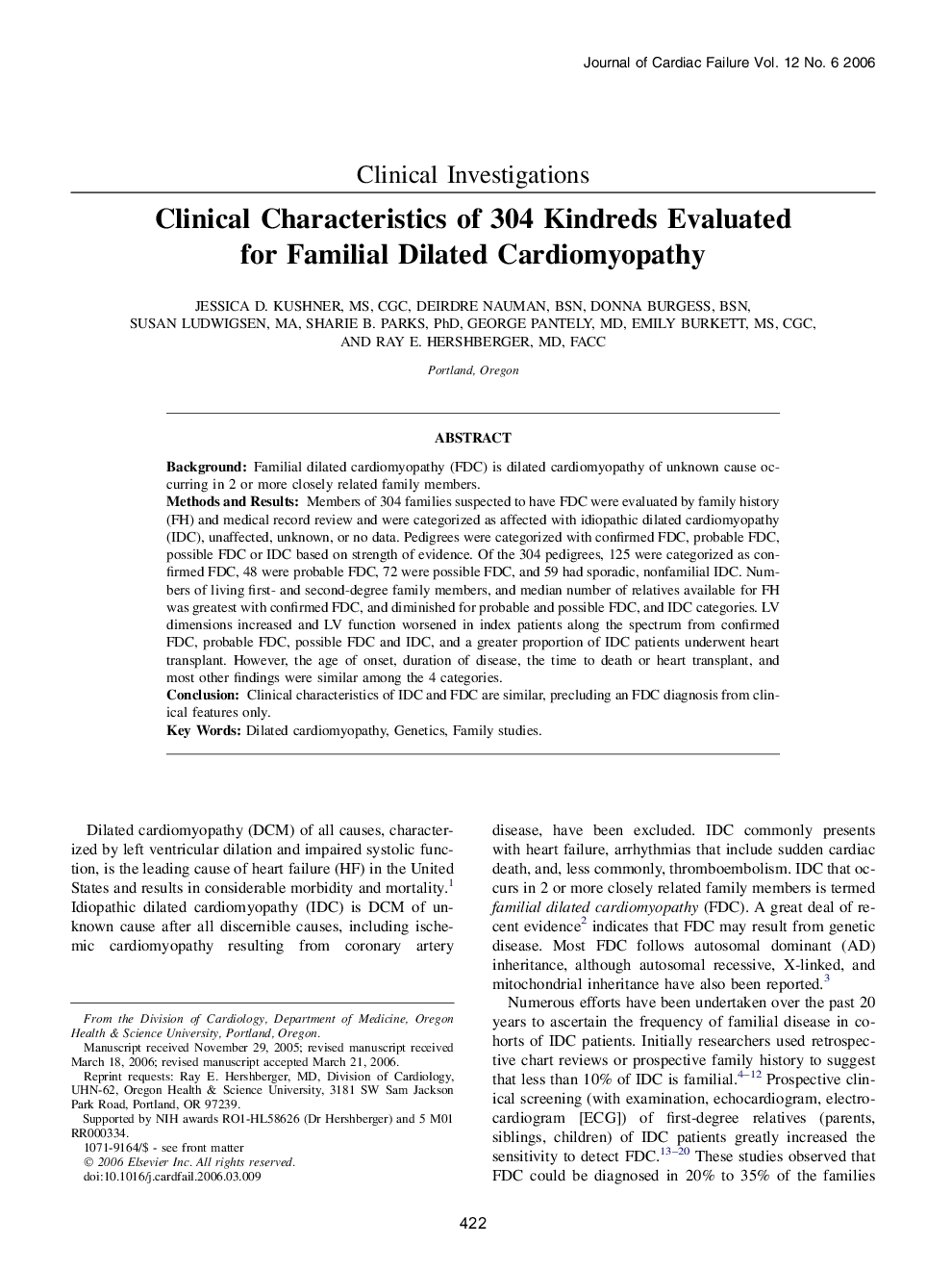| Article ID | Journal | Published Year | Pages | File Type |
|---|---|---|---|---|
| 2961802 | Journal of Cardiac Failure | 2006 | 8 Pages |
BackgroundFamilial dilated cardiomyopathy (FDC) is dilated cardiomyopathy of unknown cause occurring in 2 or more closely related family members.Methods and ResultsMembers of 304 families suspected to have FDC were evaluated by family history (FH) and medical record review and were categorized as affected with idiopathic dilated cardiomyopathy (IDC), unaffected, unknown, or no data. Pedigrees were categorized with confirmed FDC, probable FDC, possible FDC or IDC based on strength of evidence. Of the 304 pedigrees, 125 were categorized as confirmed FDC, 48 were probable FDC, 72 were possible FDC, and 59 had sporadic, nonfamilial IDC. Numbers of living first- and second-degree family members, and median number of relatives available for FH was greatest with confirmed FDC, and diminished for probable and possible FDC, and IDC categories. LV dimensions increased and LV function worsened in index patients along the spectrum from confirmed FDC, probable FDC, possible FDC and IDC, and a greater proportion of IDC patients underwent heart transplant. However, the age of onset, duration of disease, the time to death or heart transplant, and most other findings were similar among the 4 categories.ConclusionClinical characteristics of IDC and FDC are similar, precluding an FDC diagnosis from clinical features only.
